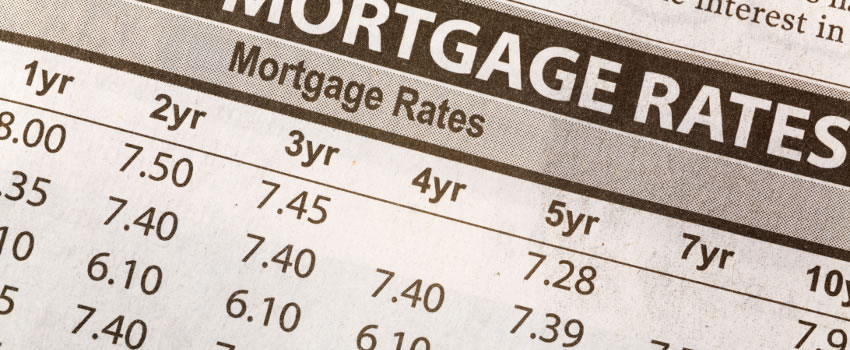Fixed vs. Adjustable Interest Rates

When getting a mortgage, you'll have an opportunity to choose between two basic types of mortgage: a fixed rate mortgage or an adjustable rate mortgage, also called an ARM. So what's the difference between a fixed rate and an adjustable mortgage? And what factors impact the amount that you pay each month? That's exactly what we'll explore in today's article.
What Impacts Interest Rates?
Before exploring the two types of mortgages, it's important to understand what affects interest rates because this can have a tremendous impact on how much you spend on your monthly mortgage payment.
In the United States, interest rates are established by the U.S. Federal Reserve. A range of factors can impact interest rates, including the national and international political climate, Wall Street and the worldwide financial markets and the economy, which is considered both on a national level and on a global scale.
Interest rates are used as a method for regulating the economy. Lowering interest rates can help prevent a recession by making it less expensive to borrow money, which in turn, promotes economic activity. Conversely, when the interest rates are higher, it becomes more costly to borrow money, causing the economy to contract. Therefore, increasing interest rates is used as a mechanism to help prevent inflation.
These are the factors that cause interest rates to fluctuate over time, thereby impacting your monthly mortgage payment.
What is a Fixed Rate Mortgage?
With a fixed rate mortgage, you lock in an interest rate when you secure the home loan. So if interest rates are at 3.5% when you take out the home loan, this is the interest rate that you can expect to pay throughout the entire term of the loan.
With a fixed rate mortgage, the monthly payment is always the same. This is beneficial because the stability of a fixed rate mortgage means you'll always know how much you need to put aside for your home loan payment each month. In the world of financial planning, certainty and predictability is a good thing.
The downside is that the nation's interest rates may dip far below the interest rate that you locked in when you obtained the loan. But it is possible to refinance your home loan, securing a lower rate. There are some costs associated with the refinancing process, but when it's timed correctly, you can enjoy some significant savings.
What is an Adjustable Rate Mortgage?
An adjustable-rate mortgage, or ARM loan, is entirely different from a fixed rate loan because you don't “lock in” a single interest rate. Instead, the interest rate changes over time, reflecting the changes that are occurring on a national level. So if the Federal Reserve increases interest rates, you'll pay a bit more, whereas if they reduce interest rates, you'll pay a bit less.
The amount of variation that you can expect to see varies depending upon the total amount borrowed on the home loan. Interest rates are calculated via percentages, so when you do the math, the potential for variation becomes apparent. For instance, 1% of a $50,00 home loan works out to $500, whereas 1% of $750,000 is $7,500.
An adjustable rate mortgage can lead to foreclosure if the payments exceed what you can afford. Ideally, you should look at historical interest rate data and calculate what you would spend on a monthly ARM loan payment if interest rates were to reach this peak. You should be able to comfortably afford this “worst case scenario” payment indefinitely. If you would be unable to pay this figure, then it may be best to secure a fixed rate home loan.
Adjustable rate mortgages can work well for those who live off the interest of their savings. Interest rates also determine how much interest you earn on your savings. So when interest rates are low, you'll earn less interest on your savings, but the mortgage payment will also be lower. Similarly, when the monthly mortgage payment rises due to higher interest rates, you'll be unlikely to run into trouble because you'll also be earning more interest on your savings.
The lowest interest rate on a fixed rate mortgages tends to be a bit higher than the lowest interest rate on an adjustable rate mortgage, which can make the latter more appealing in some scenarios.
In an economic environment where interest rates are high (or at what's expected to be a peak level), it may be beneficial to opt for an ARM loan since the monthly payment will be lower than a fixed rate mortgage loan and the payments will likely decrease with time. Ultimately, you may opt to refinance to a fixed rate loan to lock in a lower rate once it appears that interest rates have bottomed out.
It's important to use caution when getting an ARM loan due to the potential for falling behind on your payments if interest rates cause your monthly payment to rise significantly. This can lead to an awkward situation because once you fall behind on your payments, it can be a challenge to refinance to a fixed rate loan.